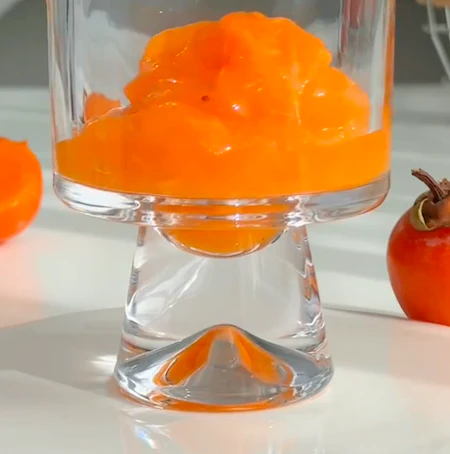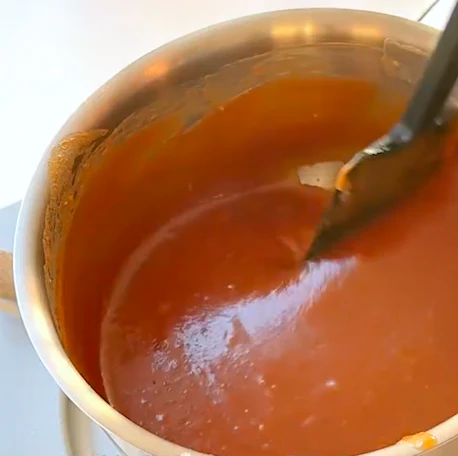
Disclosure: This post contains affiliate links, meaning if you make a purchase via the links, we will earn a commission at no additional cost to you. Please read the full disclosure.
Are you in search of a unique and delicious recipe that combines the smoothness of coconut milk with the natural sweetness of persimmons? Look no further! In this article, we will guide you through the process of making a mouthwatering persimmon coconut milk that is sure to satisfy your taste buds.
Why would you love this recipe for making persimmon cocomilk ?
The combination of persimmons and coconut milk creates a rich and creamy texture, with a hint of tropical sweetness. This recipe is not only incredibly flavorful but also packed with nutrients. Persimmons are rich in vitamins A and C, while coconut milk is a great source of healthy fats.
Benefits of Persimmons
Persimmons are a versatile fruit that offers numerous health benefits. Rich in vitamins A and C, these vibrant orange fruits are known for their antioxidant properties. Vitamin A promotes healthy vision and supports the immune system, while vitamin C boosts collagen production and enhances skin health.
Not only are persimmons packed with vitamins, but they also contain dietary fiber. Fiber aids in digestion and helps regulate blood sugar levels. Additionally, persimmons are low in calories and fat, making them a great choice for those looking to maintain a healthy weight.
Ingredients
- 1 persimmon
- 1 canned coconut milk
- ice cubes
Directions

step 1
Make persimmons puree using a handhold blender.

step 2
Pour the persimmon puree to a glass.

step 3
Add ice cubes and pour in the coconut milk.
Take a moment to savor the enticing aroma as the flavors of persimmons and coconut meld together. Once blended, your persimmon coconut milk is ready to be enjoyed as is or used in various culinary creations.
Pro Tips
To ensure the best taste, select persimmons that are vibrant in color and have a very soft texture. Avoid persimmons that are bruised or have blemishes, as they may affect the overall quality of your persimmon coconut milk. Once you have chosen your persimmons, it’s time to prepare them for cooking.
Serving Suggestions
- Smoothie Base: Use the persimmon coconut milk as a base for a delicious and nutritious smoothie. Add your favorite fruits, leafy greens, and a scoop of protein powder to create a satisfying and energizing meal replacement.
- Breakfast Bowl: Pour the persimmon coconut milk over a bowl of your favorite granola or muesli. Top it with fresh fruits, nuts, and seeds for a nourishing and Instagram-worthy breakfast.
- Vegan Desserts: Use the persimmon coconut milk as a dairy-free substitute in your favorite dessert recipes. It works well in puddings, custards, ice creams, and even as a creamy topping for cakes and pies.
Variations and Additions
- Sweeteners: If you prefer a sweeter taste, you can add natural sweeteners such as honey, maple syrup, or agave nectar. Start with a small amount and adjust to your desired level of sweetness.
- Spices: Experiment with spices like cinnamon, nutmeg, or cardamom to add warmth and depth to your persimmon coconut milk. These spices complement the natural flavors and create a comforting and aromatic experience.
- Citrus Zest: For a burst of freshness, consider adding a sprinkle of citrus zest, such as lime or orange, to brighten up the flavors. The zesty notes will elevate the overall taste and provide a refreshing twist.
Top Questions
How to make coconut milk at home?
While store-bought coconut milk is readily available, making your own homemade version allows you to control the ingredients and avoid any additives or preservatives. The process is surprisingly simple and requires only two main ingredients: shredded coconut and water.
To make homemade coconut milk, start by adding one cup of shredded coconut to a blender. Pour two cups of hot water over the coconut and let it sit for about 10 minutes to allow the coconut to soften. Once the coconut has soaked, blend it on high speed for 2-3 minutes until it becomes a smooth and creamy mixture.
Next, strain the blended mixture through a nut milk bag or fine mesh sieve to remove any solids. Squeeze the bag or press the mixture against the sieve to extract as much liquid as possible. The resulting liquid is your homemade coconut milk, which can be used in a variety of recipes, including our persimmon cocomilk.
What kind of persimmon should I use?
When making persimmon coconut milk, it’s important to choose the right persimmons for optimal flavor and texture. There are two main types of persimmons: Fuyu and Hachiya. Fuyu persimmons are small and round, similar to a tomato, and can be eaten while they are still firm. Hachiya persimmons, on the other hand, are larger and have an elongated shape. They are best enjoyed when fully ripe and soft.
Popular Articles
- All Post
- Dessert

















